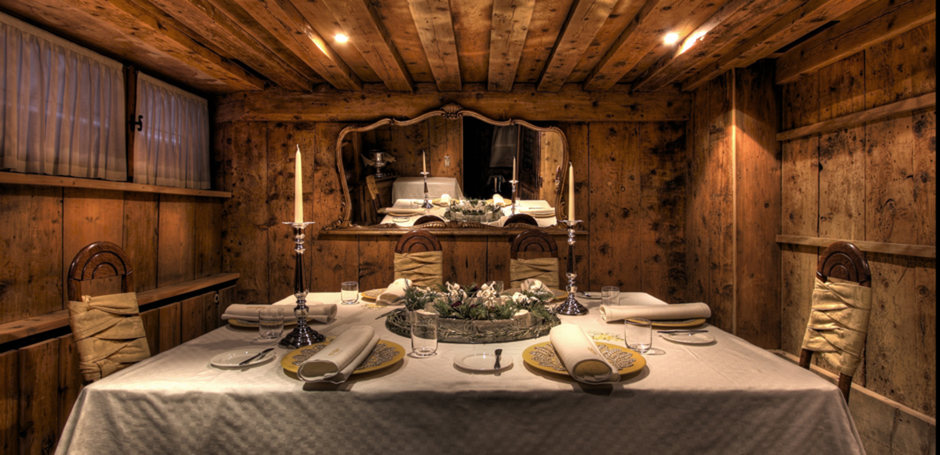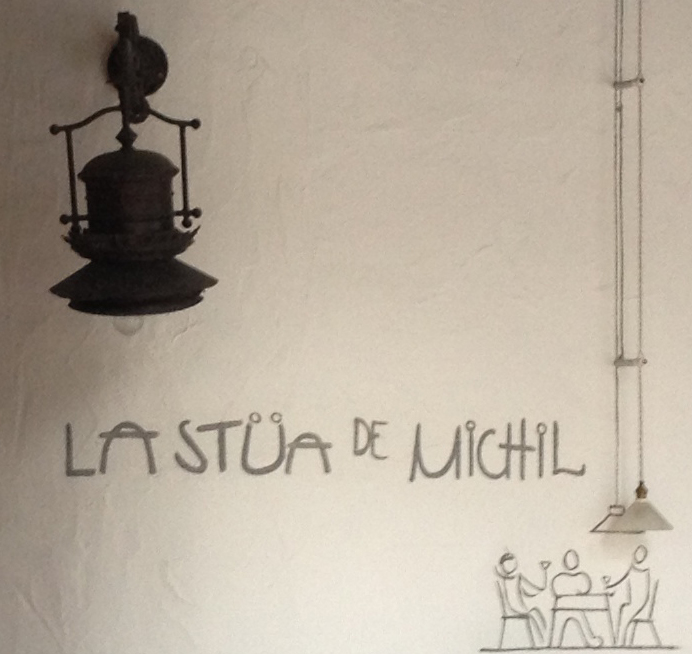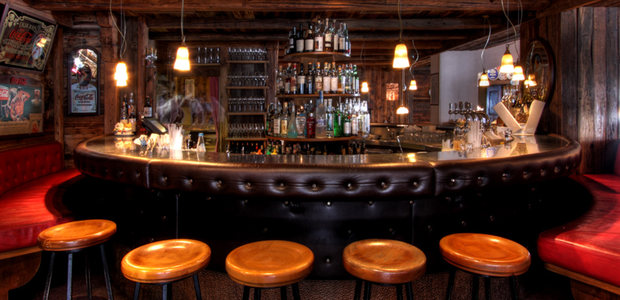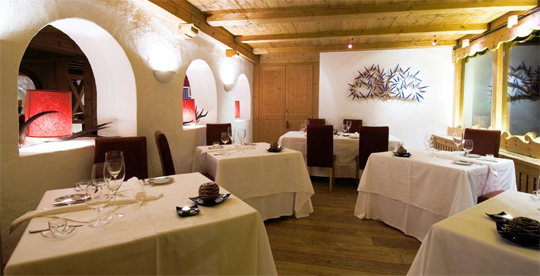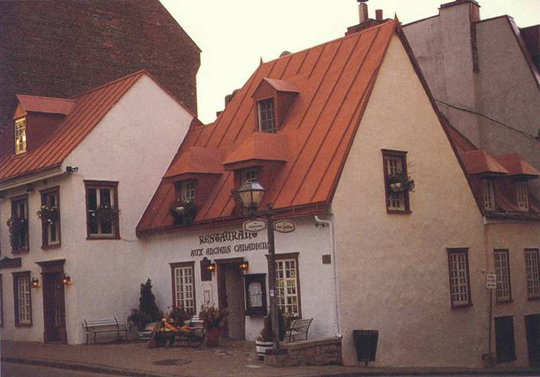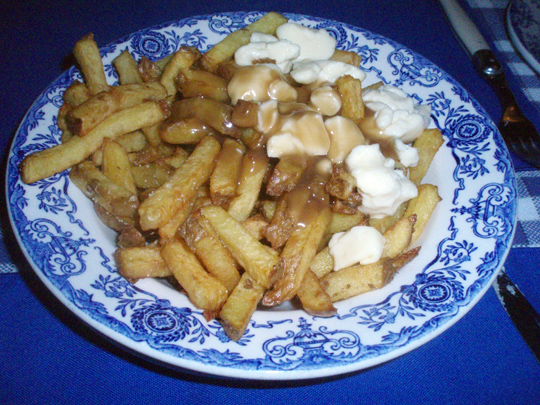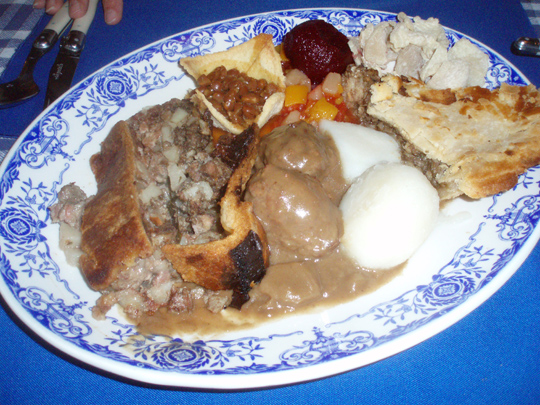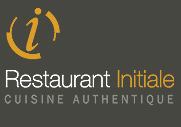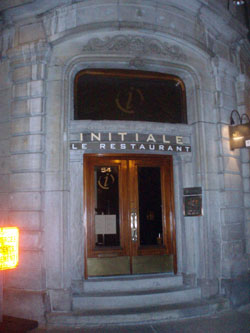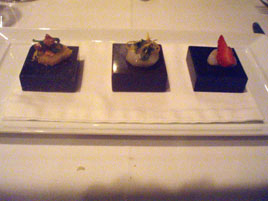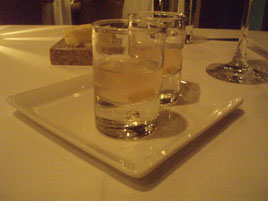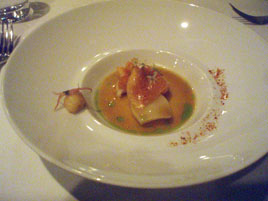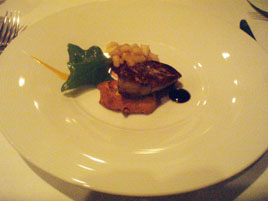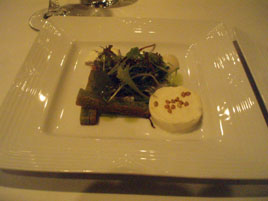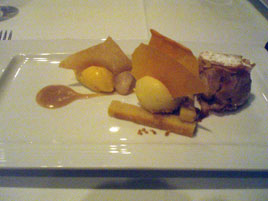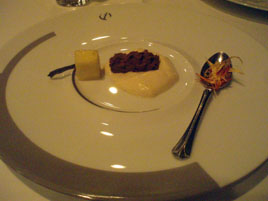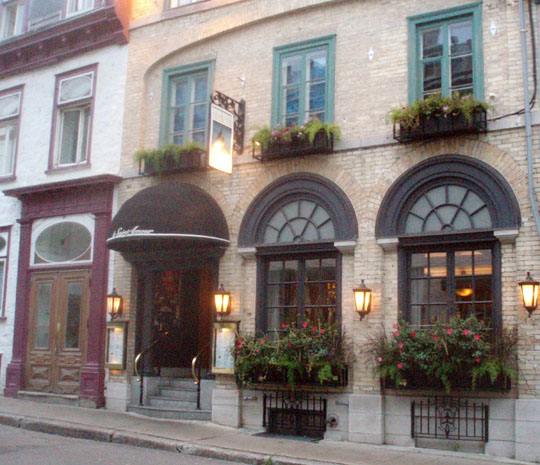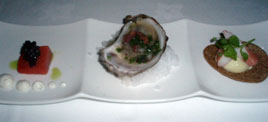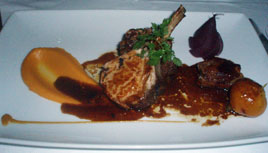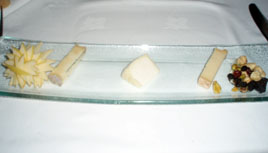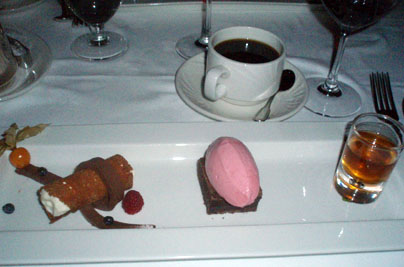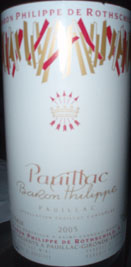St. Hubertus
 Friday, April 12, 2013 at 11:57AM
Friday, April 12, 2013 at 11:57AM 
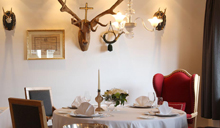 Our fine dining tour of the Dolomites concluded with St. Hubertus in the luxurious Rosa Alpina hotel in San Cassiano, the region’s only two-star restaurant, and a clear step above the other two we visited, La Siriola and La Stüa de Michil.
Our fine dining tour of the Dolomites concluded with St. Hubertus in the luxurious Rosa Alpina hotel in San Cassiano, the region’s only two-star restaurant, and a clear step above the other two we visited, La Siriola and La Stüa de Michil.
There are several tasting menus offered, but we ordered a four-course meal from the carte. Nothing is inexpensive here. Dinner for two, including wine (a €65 Carmenero) came to €373, or about $467.
Like the other starred restaurants we visited, the space is accented in blonde wood, rustic artwork, and sprays of flowers. The staff dress in a livery of modern gray suits. The service style is classic, elegant, and prceise, with a batallion of servers, up to four at a time appearing at your table whenver there are dishes to be delivered or cleared.

My son, who has become an adventurous eater, started with the calf’s head (€40): as prepared here, by the time it reached the table, you couldn’t really tell what it was, aside from a delicious treat. Variations on duck liver (€41) were prepared four ways, capped by a foie gras crème brûlée.
My son’s spelt linguine with veal ragout (€32) was one of the meal’s highlights, perhaps the best illustration that there’s no limit to how good such a simple dish can be, when the chef has sufficient skill. I ordered a risotto with graukäse (€30), a traditional Tyrolean cheese. For the main course, we both had the lamb (€42), prepared about four different ways (loin, chop, belly, shoulder), all superb.
A baked Tarte Tatin (€22) was the best dessert of the trip. Multiple rounds of petits fours followed.
As I noted in the previous review, I elected not to take detailed notes. I hope these brief impressions, coupled with the slideshow, give some idea of what the restaurant was like. Descriptions of the photos are on the Flickr site.
St. Hubertus, Rosa Alpina Hotel, San Cassiano, Italy
 Dolomites,
Dolomites,  Italy in
Italy in  Cuisines: Italian,
Cuisines: Italian,  Restaurant Reviews,
Restaurant Reviews,  Travel
Travel 

